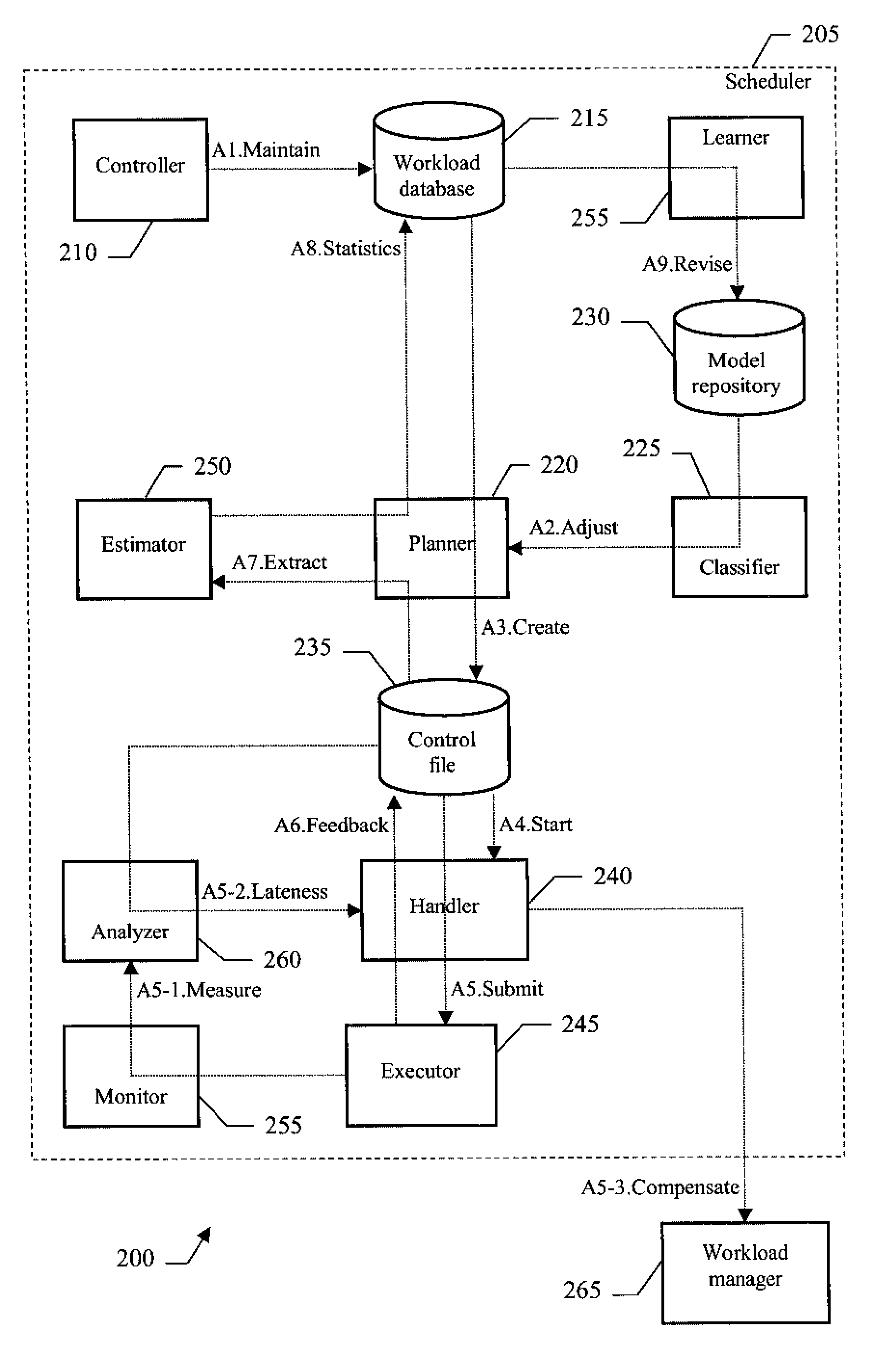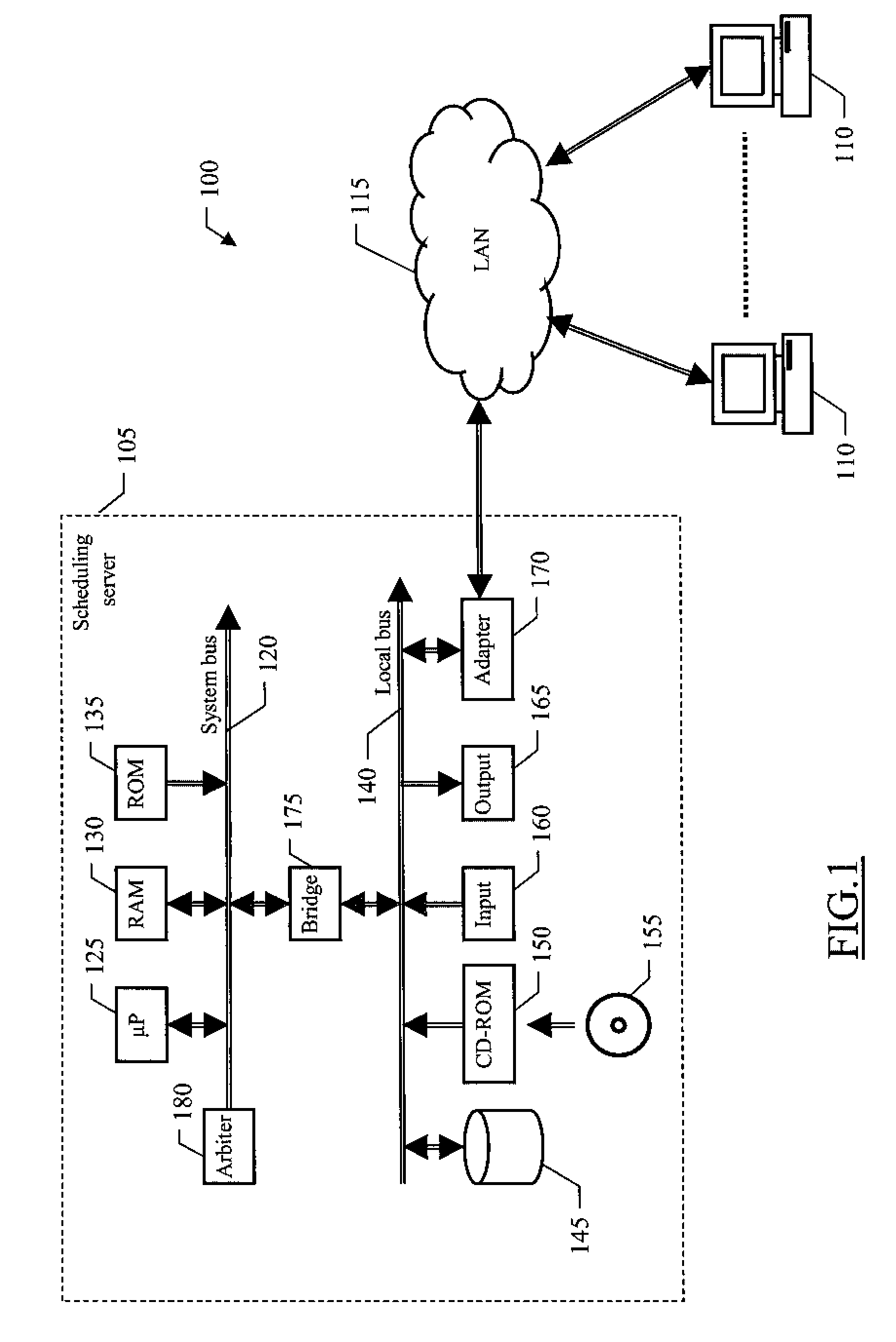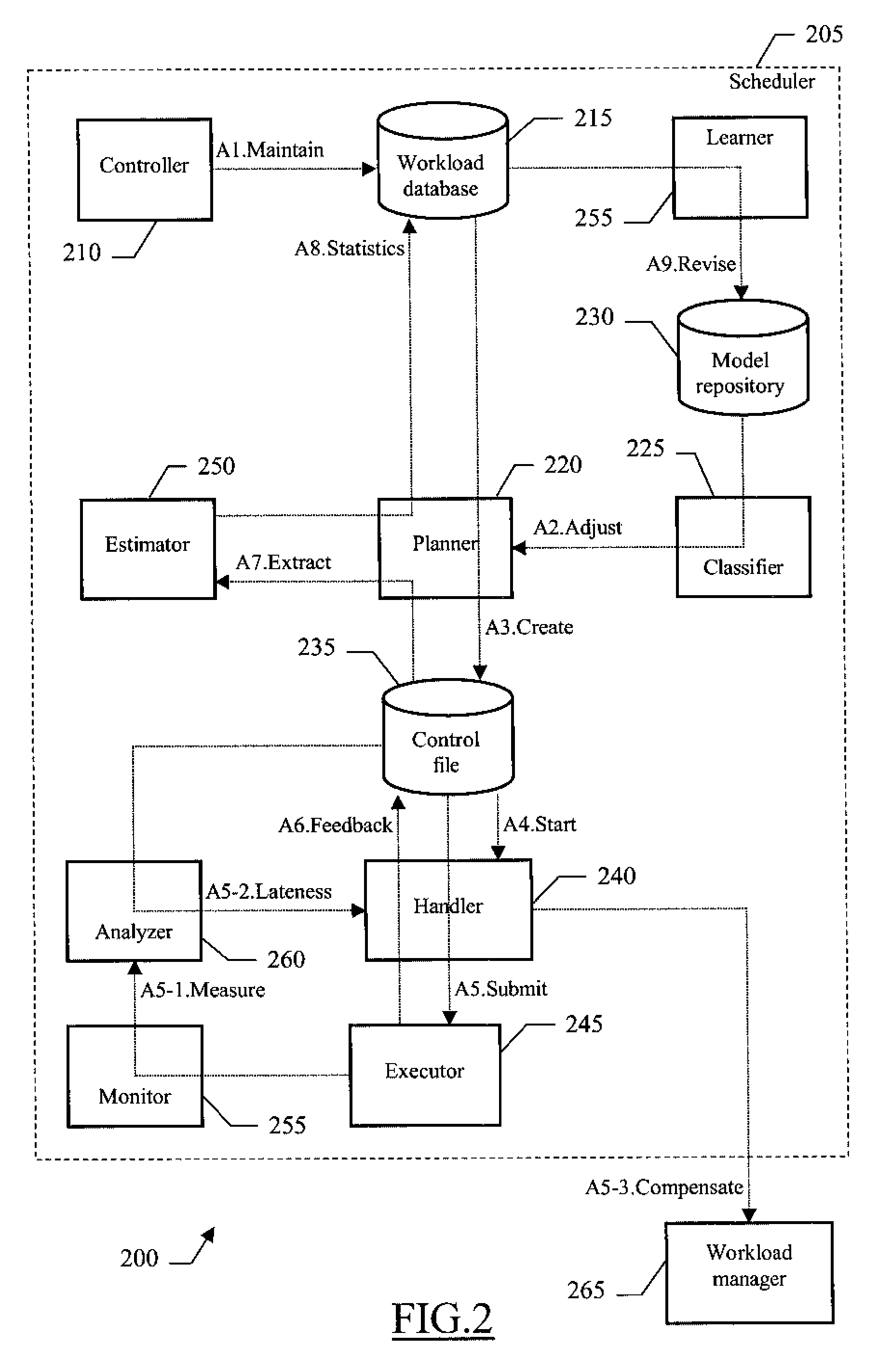Method, system and computer program for scheduling execution of work units with monitoring of progress thereof
a work unit and work schedule technology, applied in the field of information technology, can solve the problems of affecting the correct execution of the above-described solution, and difficult (if not impossible) to distribute the available resources correctly to the different jobs
- Summary
- Abstract
- Description
- Claims
- Application Information
AI Technical Summary
Problems solved by technology
Method used
Image
Examples
Embodiment Construction
[0028]With reference in particular to FIG. 1, a data processing system 100 with distributed architecture is illustrated. The system 100 includes a central scheduling server 105, which is used to automate, monitor and control the execution of jobs in the system 100. Typically, the jobs consist of non-interactive tasks (for example, relating to accounting applications), which are to be executed on a set of workstations 110. For this purpose, the scheduling server 105 and the workstations 110 communicate through a network 115—such as a Local Area Network (LAN).
[0029]More specifically, the scheduling server 105 is formed by several units that are connected in parallel to a system bus 120. In detail, multiple microprocessors (μP) 125 control operation of the scheduling server 105; a REM 130 is directly used as a working memory by the microprocessors 125, and a ROM 135 stores basic code for a bootstrap of the scheduling server 105. Several peripheral units are clustered around a local bus...
PUM
 Login to View More
Login to View More Abstract
Description
Claims
Application Information
 Login to View More
Login to View More - R&D
- Intellectual Property
- Life Sciences
- Materials
- Tech Scout
- Unparalleled Data Quality
- Higher Quality Content
- 60% Fewer Hallucinations
Browse by: Latest US Patents, China's latest patents, Technical Efficacy Thesaurus, Application Domain, Technology Topic, Popular Technical Reports.
© 2025 PatSnap. All rights reserved.Legal|Privacy policy|Modern Slavery Act Transparency Statement|Sitemap|About US| Contact US: help@patsnap.com



